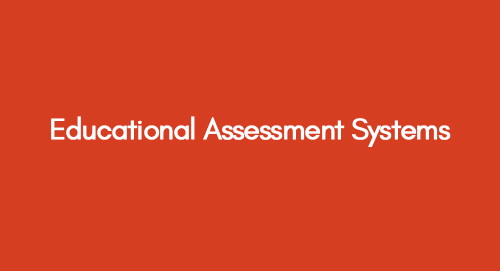
Changing Patterns of Human Resource Management (HRM) in Construction Industry
December 19, 2020
Project Plan and Methodology | Project Management Techniques
December 19, 2020Procurement methods are strategic approaches to acquiring goods, services, or construction projects, with options such as design-build, management, integrated, and traditional methods. Selecting a suitable procurement method significantly impacts project costs, risks, and overall success. Procurement methods are indispensable tools that wield a profound impact on the trajectory of any project. They influence critical factors, from meticulous cost considerations to adept risk management. In the dynamic realm of construction and service delivery, project managers navigate complex landscapes where choosing a procurement method is akin to setting the project's course for success. Understanding the intricacies inherent in different procurement methods becomes beneficial and crucial for project managers seeking optimal outcomes.
Importance of Procurement Strategy & Impact on Construction Projects
In this blog, we embark on a journey to uncover the profound significance of procurement methods in project management. We'll unravel the nuances of common approaches utilized in the industry, shedding light on how these strategies mould the collaborative efforts, timelines, and overall success of diverse projects. As we delve into the intricacies of procurement methods, we aim to provide project managers with valuable insights to make informed decisions that align with their projects' unique demands and challenges.
Rationale / Executive Summary
To initiate the project development process, the crucial first step involves selecting an appropriate procurement method. Love et al. (1998) define procurement systems as organizational frameworks that allocate responsibilities and authority to individuals and entities, outlining various aspects of the construction project. Recent research articles by Wardani (2004) and Bygballe et al. (2010) characterize the procurement process as activities undertaken by a client or employer seeking the construction or renovation of a structure. While procurement methods have evolved, they remain pivotal in the success of projects, particularly in the construction and civil engineering sectors (Ruthankoon and Ogunlana 2003).
Comparative Assessment of European and Chinese Civil Engineering Standards
Given this context, Oldcross Borough Council (Department of Community Services) must thoroughly analyze various procurement methods to identify the one best suited for the project. Considering its inclusive nature covering project financing and management aspects, a comprehensive review of the "Design-Build Finance and Operate" procurement method for major public-sector projects is warranted. This report will critically assess this procurement method compared to other viable methods, specifically emphasising public-sector projects.
Moreover, the ensuing report will analyse the advantages and disadvantages of Design Build Finance and Operate in contrast to alternative methods for clients, consultants, and contractors. Understanding the merits of partnering relationships in design and construction projects within civil engineering is also essential. Furthermore, the report will address the impact of cost risk on selecting a procurement method, elucidating how this factor influences the decision-making process.
DBFO Procurement for Public Projects: Contractor, Consultant, and Client Perspectives
Before commencing the procurement processes for any project, the client must formulate a well-thought-out project strategy. This strategy should consider dynamic aspects such as benefits, risks, expertise, and budget constraints associated with the project, enabling an informed decision on the most suitable procurement methodology. Drawing insights from literature (Love et al. 1998; Wardani, 2004; Mishra 2006; Davis et al. 2006), four primary procurement methods prevalent in the construction industry are identified:
- Traditional: Involves standard procurement procedures where the contractor is responsible solely for executing construction based on the provided design and Bill of Quantities (BOQs).
- Management: A customized system wherein information is shared, and management oversees contractors, with clients assuming major responsibility.
- Design and Build: Transfers the design and construction risk to the contractor.
- Integrated: Shares risk assumptions and responsibilities among stakeholders.
Policies, resources, contractual agreements, and the client's organizational structure influence the procurement method. Evaluating these factors is crucial, as they significantly impact the procurement strategy. External factors, encompassing financial, commercial, governmental, social, legal, and technical aspects, should be prioritized in the client's evaluation, as Rowlinson (1999) suggested.
Mortledge et al. (2006) also emphasize assessing stakeholders' resources, project characteristics (size, complexity, uniqueness, and location), and the likelihood of expected changes to the project's original requirements. This comprehensive evaluation ensures a robust understanding of the project landscape.
Financing plays a pivotal role in project integration with procurement strategies. Contractors, clients, and consultants should analyze various financing methods throughout all project phases. Precise project financing, coupled with an integrated procurement strategy, is deemed essential for the long-term success of infrastructure projects, particularly in the public sector. The method of financing can significantly influence the selection of procurement systems, determining the risks assumed by both the contractor and the client.
Project financing can take various forms, with the Design-Build-Finance-Operate (DBFO) model particularly interesting. Stemming from Build Own Operate Transfer (BOOT) characteristics, DBFO shares aspects of the financing structure but lacks ownership transfer. In DBFO, the contractor assumes financial risks until the contract period's completion, with the owner primarily responsible for maintenance and operation. This procurement structure, derived from the design and build system, becomes especially suitable for public sector projects, where expert contractors ensure project success by integrating finance and operation.
Design Build Finance Operate (DBFO): Procurement Method Technique
DBFO boasts several advantages, including encouraging private investment in public sector projects, attracting foreign capital, transferring new technology and knowledge, ensuring project completion within time and budget constraints, and allowing additional financial resources for other priority projects. The model enables flexibility in project finances, releases the burden on public budgets, and allows the government to remain the sole owner of the built facility without incurring debt, utilizing cash flows for repayment to project shareholders over a contracted period.
Civil Engineering Project Partnering: Benefits and Addressing Challenges
Wood and Ellis (2005) argued that partnering relationships have become an innovation in the construction industry, leading to improved project performance. Partnering is a long-standing commitment between two or more parties to achieve specific business objectives by capitalizing on the resources contributed by each participant (Construction Industry Institute 1991; Bygballe et al. 2010). Bygballe et al. (2010) and Love et al. (1998) define partnerships as strategic arrangements involving a contractor in a series of projects or short-term individual projects to reduce costs and optimize project outcomes.
Operating partnerships, distinct from strategic alliances, involve stakeholders sharing resources to achieve common project aims. Academic literature highlights positive characteristics associated with partnership arrangements. Gordon (1994) reported significant cost and time savings for large enterprises engaged in partnerships, with collaborative efforts influencing clients and contractors positively.
Studies by Hughes et al. (2006), Hughes et al. (2005), and Lui and Fellow (2001) suggest that partnering can enhance project performance if certain conditions are met, including a presence of work assurance and equal benefits for each partner.
Practical implementation of project partners, as suggested by research by Hamza and Elkadi (1999), Hamza and Greenwood (2007), and Black et al. (2000), yields various advantages. Such partnerships reduce project time and cost, encompassing operational savings, construction project savings, and faster execution. Chan et al. (2004) point out the benefits of risk-sharing, including reduced risk exposure through improved understanding and information sharing, design and construction enhancement, and optimization of procurement-related activities. Partnerships contribute to economic growth, revenue generation, and national development (Hamza and Elkadi 1999).
The construction industry is notably inclined towards using public-private partnerships (PPPs). Hoffman (2007) defines PPPs as collaborations between the government and private sector companies to finance and operate a business venture or government service. PPPs involve a contract between a public sector entity and a private entity, where the private entity assumes significant project risks. This arrangement allows governments to mitigate risks associated with large-scale public sector projects.
Public-private partnerships offer advantages such as cost certainty and developing local and private sector capabilities through resource collaboration (Palaneeswaran and Kumaraswamy, 2000). However, there are also disadvantages, including ongoing expenditures, developments, and bidding costs. Governments must carefully assess if the increased project costs are justified and manage the potentially high costs associated with debt. While private organizations make obtaining additional finance easier, caution is necessary to balance costs and associated risks. Negotiating specific criteria within the contract, including incentives and performance requirements, is recommended before undertaking the project (Anderson and Molenaar, 2007).
Project Cost Risks: Influencing Procurement Method Selection
As per the PMBOK Guidebook (2008), risk is "an uncertain event or condition that, if it transpires, can negatively impact a project’s objectives." This implies that anything identified as a risk may or may not occur, but measures should be implemented to decrease the likelihood of its occurrence. Cost risk, often defined as the likelihood of incurring losses due to cost overruns (Hulett 2009), is particularly significant in infrastructure projects, where exceeding construction costs is considered a substantial risk. Therefore, assessing the probability of cost overruns is crucial, as understanding their impact on overall project planning and implementing mitigation strategies accordingly.
Accurate information on cost overruns serves as a vital input for assessing risks in cost estimations, enhancing the potential for equity and debt financing for construction projects. Morledge et al. (2006) emphasize the importance of assembling an effective project team to deliver a project within the specified time and cost parameters. Stakeholders are advised to seek independent advice on this critical aspect. Additionally, Holt et al. (2000) argue that when project costs are deemed significant, or the design complexity is high, the chosen procurement methods should facilitate greater integration and collaboration among project team members. Therefore, the risks associated with project costs emerge as pivotal factors influencing the selection of the most appropriate procurement method.
Cantarelli (2012) and Makovsek (2012) found in their research that the accuracy of cost estimates significantly influences procurement decisions, with the selection of procurement systems relying on the probability distribution of cost overruns—a continuous and positive systematic risk. They emphasized the heightened construction risk in public projects. Flyvberg et al. (2002) identified two major sources of construction risks:
- Exogenous risks include weather, engineering challenges, unforeseen archaeological sites, and ground conditions.
- Endogenous risks involve a party's exposure to uncertain costs.
Endogenous risks are typically associated with the contractor rather than the client. Blanc and Makovsek (2013) noted that when there is an increased risk in construction costs, the party responsible for design and construction may bear this risk. In a design-build procurement system, where the contractor is tasked with finalizing the design and completing construction, they assume responsibility for the associated risks in completing these tasks.
Project Management a Reflective Report in Risk Management
Nonetheless, effective procurement methods and their optimal implications can mitigate many risks. Morledge et al. (2006) and Rowlinson (1999) highlight the importance of initially establishing a primary project strategy. Subsequently, the following factors are assessed to determine the most suitable procurement strategy:
- External factors
- Client Resources
- Project characteristics
- Ability to make changes
- Cost considerations
- Timing
According to Mortledge et al. (2006), clients should comprehensively assess price certainty, considering dynamic elements such as potential time delays in tendering, the formulation of Bills of Quantities (BOQs), fluctuations in market prices, and design variations. The completeness of the project design significantly influences costs at the tender stage. To prioritize price certainty, finalising project designs before commencing construction is recommended, minimizing the need for design changes (Rowlinson 1999).
When the primary objective is to reduce cost risk, the traditional procurement method is favoured. This method ensures maximum cost certainty for well-defined projects and is resistant to design changes that may lead to significant cost implications (Luu et al., 2003).
However, Flyvberg et al. (2002) contend that the tendering system, prevalent in the traditional procurement method, introduces uncertainty into contract negotiations. Incomplete documentation during the tender stage makes it challenging for the primary contractor to provide an accurate cost estimate. This challenge arises from the client's lack of expertise in precisely estimating BOQs based on required designs. Additionally, under the traditional system, a completed design is a prerequisite before initiating work on the project (Flyvberg et al. 2002).
Conclusion
In summary, the choice of procurement systems, whether design-build, management, integrated, or traditional, should be made early in the project, with a thorough review and analysis of anticipated cost variations before reaching a final decision. This decision significantly influences the overall project cost and the risks that collaborating organisations bear. As Mark and Picken (2000) recommended, adopting optimized procurement methods can enhance construction efficiency, leading to the successful and timely completion of construction projects.
References
Anderson, S. D., Molenaar, K. R., and Cliff, S. (2007). Guidance for Cost Estimation and Management for Highway Projects.
Blanc, B. F., and Makovsek, D. (2013). Construction risk in infrastructure project finance. EDHEC Business School.
Black, C., Akintoye, A., and Fitzgerald, E., (2000). An analysis of success factors and benefits of partnering in construction, pp. 422-433.
Bygballe, L. E., Jahre, M., and Sward, A. (2010). Partnering relationship in construction: A literature review., pp. 238-249.
Cantarelli, C., (2012). Cost overruns in large-scale transport infrastructure projects- A theoretical and empirical exploration for the Netherlands and worldwide. Transport Policy, pp. 89-92.
Chan, A. P. et al. (2004). Exploring critical success factors for partnering in construction projects. pp. 191-194.
Construction Industry Institute, (1991). In search of partnering excellence.
Davis, P., Love, P., and Baccarini, D. (2006). Report- building procurement methods. CRC Construction Innovation.
Flyvbjerg, B., Holm, M. S., and Buhl, S. (2002). Underestimating costs in public works projects, pp 280-294.
Gordon, C. M. (1994). Choosing appropriate construction contracting method.’ ASCE pp. 195-209.
Hamza, N., and Greenwood, D, (2007). The impact of procurement methods on delivering environmentally sensitive buildings. Procs 23rd Annual ARCOM Conference, 3, p. 723-732.
Hamza, N., and Elkadi, H. (1999) ‘Impacts of thermal performance regulations on office building refurbishment.’ Proceedings of the 3rd International Conference for Teachers in Architecture, p. 9-12.
Hoffman, S., (2007). The Law & Business of International Project Finance 3rd ed, Cambridge University Press.
Holt, G.D., Proverbs, D., and Love, P. E.D. (2000) ‘Survey findings on UK construction procurement: Is it achieving lowest cost or value?’ Asia Pacific Building and Construction Management Journal, 5, p. 13-20.
Hughes, W.P., Greenwood, D. J., and Hillebrandt, P. M. (2005) ‘Impact of procurement method on procurement costs. Proceedings of the 11th Joint CIB International Symposium: Combining Forces-Advancing Facilities Management and Construction Through Innovation, Helsinki, Finland, p. 13-16.
Hughes, W.P., Hillebrandt, P. M., Greenwood, D. J., and Kwawu, W. (2006) ‘Procurement in the construction industry- The impact and cost of alternative market and supply process.’ Spon Research Series. London: Taylor Francis.
Hulett, D. (2009) Practical Schedule Rise Analysis. Farnham, UK: Gower Publishing.
Love, P. E. D., Skitmore, R. M., and Earl, G. (1998). Concurrent engineering: A strategy for procuring construction projects. pp. 223-232.
Luu, D. T., Thomas, S., and Chen, S. E. (2003). Parameters governing the selection of procurement system, An empirical study. pp. 222-229.
Mak, S., and Picken, D. (2000). Using risk analysis to determine construction project contingencies. pp. 130-136.
Makovsek, D. (2012). Public-private partnerships, traditional financed projects, and their price.
Mishra, R. C. (2006). Modern Project Management. New Age International, Inc.
Mortledge, R., Smith A., Kashiwagi, D. T. (2006) Building Procurement. Oxford, UK: Blackwell.
Project Management Institute (PMI) (2008). A Guide to the Project Management Body of Knowledge (4th ed.). Project Management Institute: USA.
Palaneeswaran, E., and Kumaraswamy, M. M. (2000). Benchmarking contractor selection practices in public sector construction, A proposed model. pp. 287-295.
Rowlinson, S. (1999). Selection criteria.’ In. Rowlinson, S., and McDermott, P., Procurement Systems: A Guide to Best Practice in Construction. London, UK: E & F Spon, pp. 274-289.
Ruthankoon, R. and Ogunlana, S. O. (2003). Two-factor theory in the Thai construction industry, pp. 335-339.
Smith, W., and Charles, A. (1995) Privatized infrastructure: The Build Operate Transfer Approach. Essex, UK: Thomas Telford.
Wardani, M. A. E. (2004). Comparing procurement methods for design-build projects. Computer Integrated Construction Research Program.
Get 3+ Free Dissertation Topics within 24 hours?












